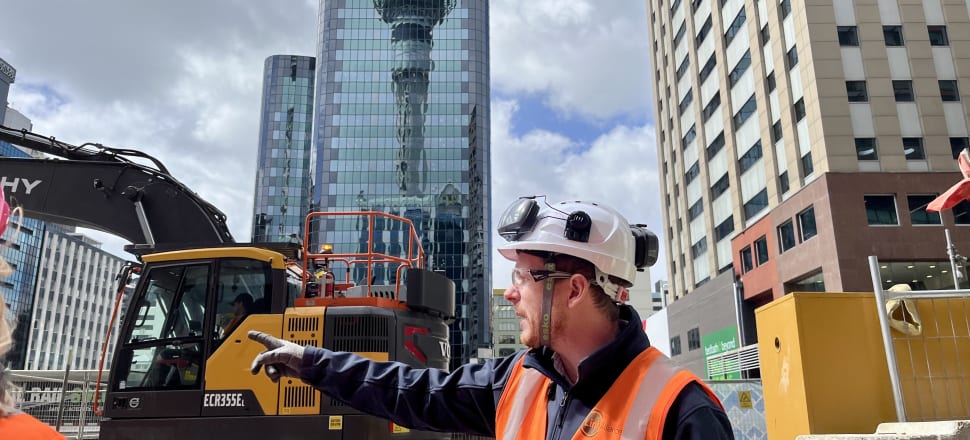
The City Rail Link is just one of many developments over the next few years that could stand to utterly transform Auckland’s CBD
With hundreds of new apartments on the way and massive developments like the City Rail Link (CRL) set to open within the next few years, the midtown area of Auckland’s CBD will soon look like a totally different city.
Unrecognisable - according to Auckland Council’s head of city centre programmes Jenny Larking.
Development in the CBD has become a hot-button issue over the past few years, with businesses in the area blaming rail link construction for reduced foot traffic.
Central city small business has had a lot to contend with alongside the dust and noise of the excavation of the 15m deep Te Wai Horotiu station, with the pandemic choking livelihoods as tourists stayed home and inner-city workers attended their meetings through computer screens.
But as the excavation of what will be New Zealand’s busiest train station nears 90 percent complete, there could be a glint of hope on the horizon for Auckland’s city centre to shed its traffic cone-coloured cocoon and emerge clad anew.
When it opens in late 2024 - should that date not be pushed out again - the station neighbouring Aotea Square will serve the highest density of businesses and residences in the country and form the centrepiece to a raft of planned developments and expansions in the immediate area.
City Rail Link versus the new mayor
The construction of the station was a consistent talking point for new mayor Wayne Brown during his campaign, using it as one of his most common examples of what he characterised as extravagant spend-ups by council.
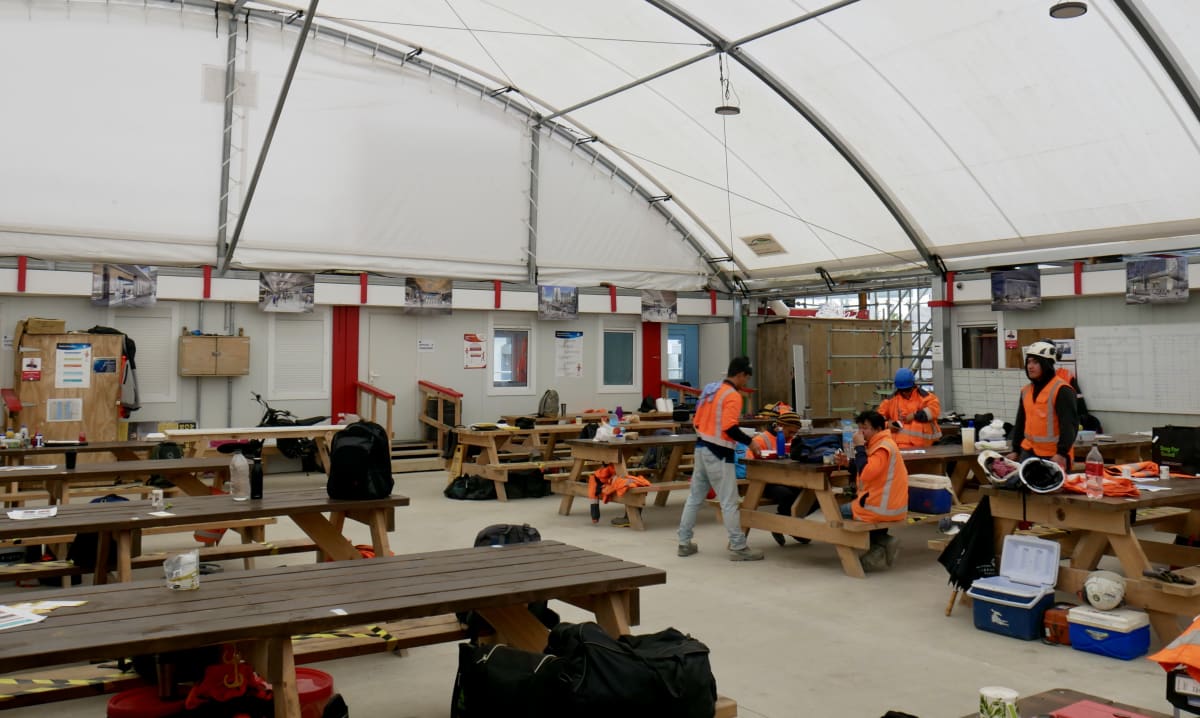
Brown’s criticisms centred on the uncertain cost of the project, which has increased over the past few years to $4.4 billion in 2019 and a number in 2022 that remains a mystery.
He also levelled snipes at the use of surface streets to house construction infrastructure, saying employee lunchrooms and portaloos needn’t be housed onsite.
CRL Ltd was unwilling to comment on the feasibility of moving worker infrastructure elsewhere.
A tour of the site, however, showed most of the areas in which workers were eating lunch or taking breaks were housed in a large temporary shelter nicknamed ‘the Dome’, located in the carpark behind Bledisloe House. It has kitchens, changing rooms, showers, and is the site of the main project briefings.
Meanwhile, administration and management are over in Newmarket.
What the arrival of a new mayor could mean for the CRL development is still unclear, but Brown has promised to have a thorough look at the books in his first week.
A new phase
With the hole-digging and the concrete-laying almost done, the project is about to move into a new phase.
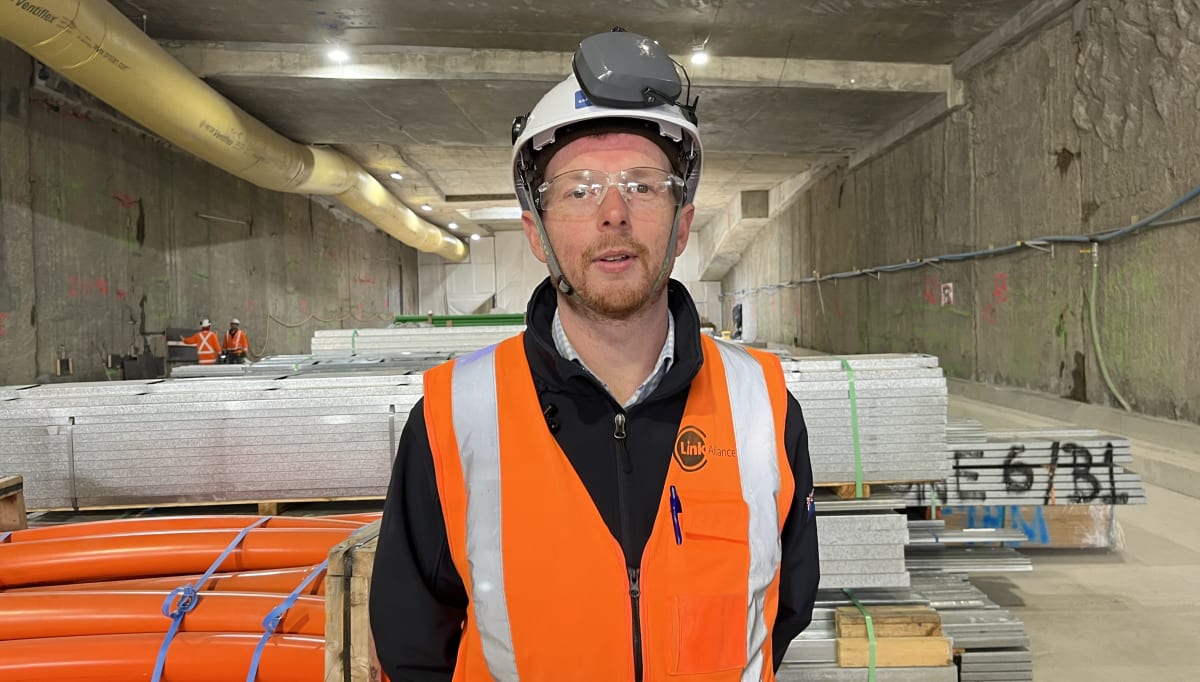
Link Alliance’s station community manager Shaun Sutton said the effort at the moment was on the transition to the onboarding of systems and architecture staff and equipment.
“The end is in sight now for the excavation and the structural concrete works of the station,” he said. “The next big phase for us ... is the architectural fit-out and also the systems work: all our mechanical, electrical, fire safety equipment has to go in.”
Then next year the CRL work starts linking up with the council’s midtown development project, linking refurbishments of Victoria and Wellesley with the station itself.
Auckland Council’s Jenny Larking has been seeing through the new plans for the midtown precinct. She expects to see 800 apartments go up through private development over the next few years.
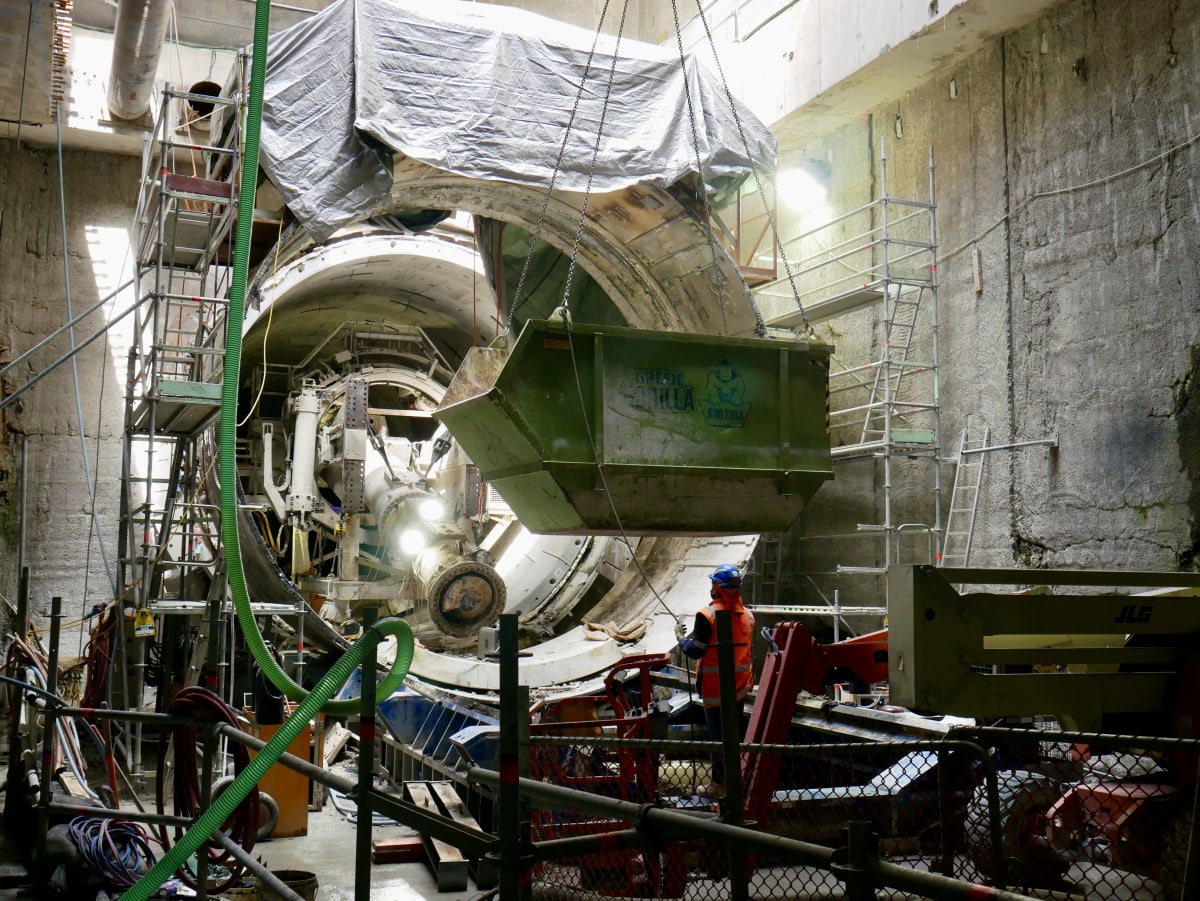
Next up from council is an overhaul of Victoria Street to promote cycling and walking, and a reroute of public transport to Wellesley Street.
The two east-west thoroughfares have had the same purpose since their construction - primarily, the easy movement of cars in and out of the Queen Street valley.
Separating the purposes of two inner-city streets is a first for Auckland, and with most passengers expected to leave and enter Te Wai Horotiu Station via the Victoria Street entrance, it sets the currently cordoned-off corridor up to be full of human life.
The return of the pedestrian
Early next year shovels will break ground on Victoria Street on the first stage of Te Hā Noa, a pedestrian-prioritised corridor that will eventually provide tree-lined wide footpaths all the way from Albert Park to Victoria Park.
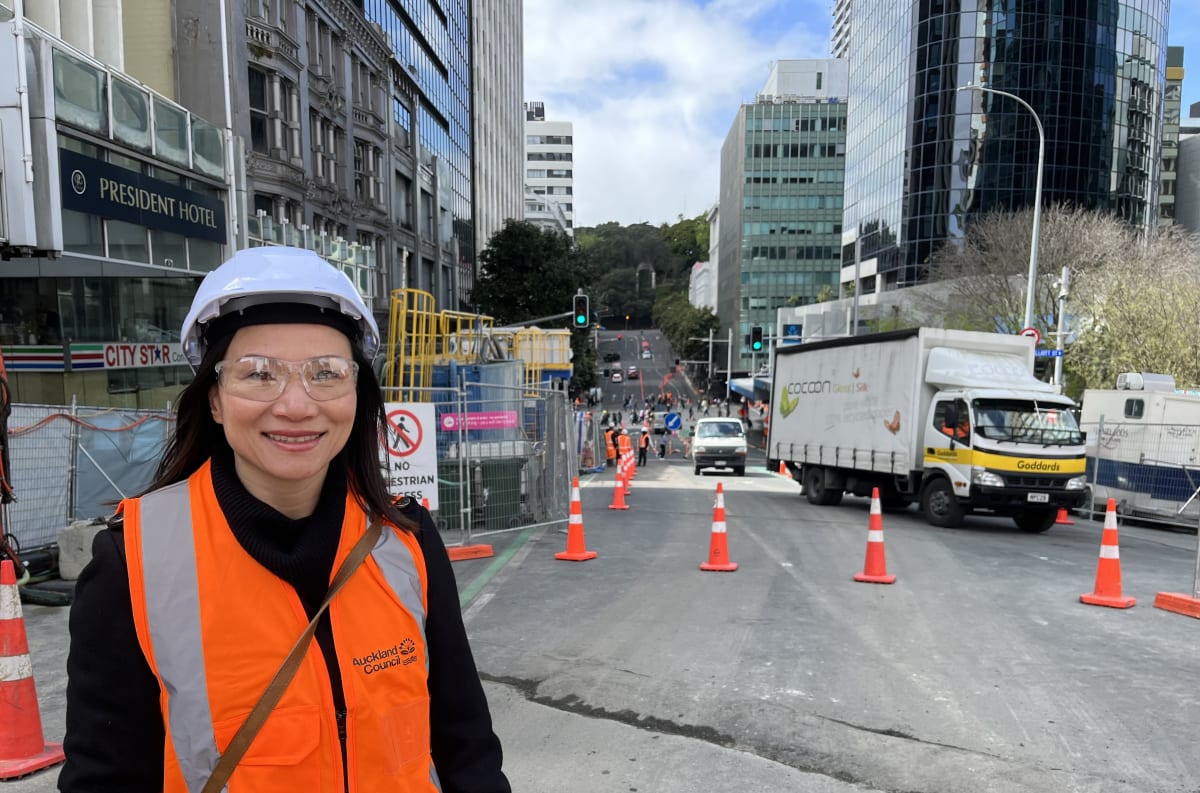
Central to this is the portal to the station, and with rail transport growth statistics suggesting CRL stations will see 54,000 passengers through their doors by 2035, it’s likely to be a well-used part of the city.
This specific location - outside the Countdown on Victoria Street next to Elliot Street - has seen big ups and downs in terms of pedestrian count.
A monitoring site operated by central city business association Heart of the City found 135,843 people walked past 205 Queen Street in January of last year, which dropped to around 15,000 in September during Auckland’s prolonged lockdown.
The numbers haven’t come back all the way in this specific part of the city, however, with numbers over the past few months hovering around 75,000 people.
The ongoing construction in the area may have something to do with it, with at least one confused passerby asking the hard-hatted and the high-vised how to find the pedestrian path that runs alongside the active site.
But those numbers largely match what Heart of the City has reported all over the CBD.
Numbers recover after lockdowns, but each successive one has seen the recovery come back a little weaker. Monthly pedestrian counts before the pandemic were between six and seven million, while nowadays they are yet to break four million.
Nevertheless, looking at the CBD as a whole there is a slow creeping trend back towards the foot traffic levels of yesteryear - just not at the site of Te Wai Horotiu just yet.
Safety in numbers
Larking is very optimistic about what going downtown will be like in a few years' time.
“We're not just building for today, we're building for what the future city centre would look like and the number of people we expect would use the CRL station,” she said. “Once the apartments come online you can expect thousands more residents and we want to encourage people to walk; and make it a safe place to walk.”
Safety in the central city has been a much talked about issue in recent years with inner-city crime spiking following the initial lockdown. It reached its zenith in January of 2021 in the three area units comprising the CBD, when there were 892 reported crimes.
Before the pandemic, those numbers hovered around 500 a month, before a steep drop-off in lockdown followed by a rapid upswing during the rest of 2020.
In 2021, the Auckland lockdown saw another drop-off, but in the past few months the numbers have climbed back up to near peak levels.
CBD business owners, however, have reported greater feelings of safety to media as more people return downtown and tourists such as those from cruise ships return to the streets.
Nevertheless, crime remains a fraction of that in larger cities around the world.
When they put aside $130 million for the midtown regeneration project, Auckland Council and Auckland Transport put increasing the feeling of downtown safety high on the list of priorities, describing the development as “a part of Auckland where our history, art and culture can be seen and heard and will spill out into public life; where people choose to spend time and socialise; a place that is attractive and feels inclusive and safe”.
If spiking crime in the inner city can be correlated with the empty streets of lockdown, perhaps the opposite will be true and busy sidewalks will keep crime at bay. However, there are other potential causes for increases in crime such as the rising cost of living which the development will not be able to mend.
The new backyard
At its heart, the new face of the city is aiming to make life more attractive for apartment-dwellers. Larking said the ultimate goal was reducing the need to travel, which requires the adoption of a mixed use model, as seen in many cities in Europe where people are able to live and work often within spitting distance of home.
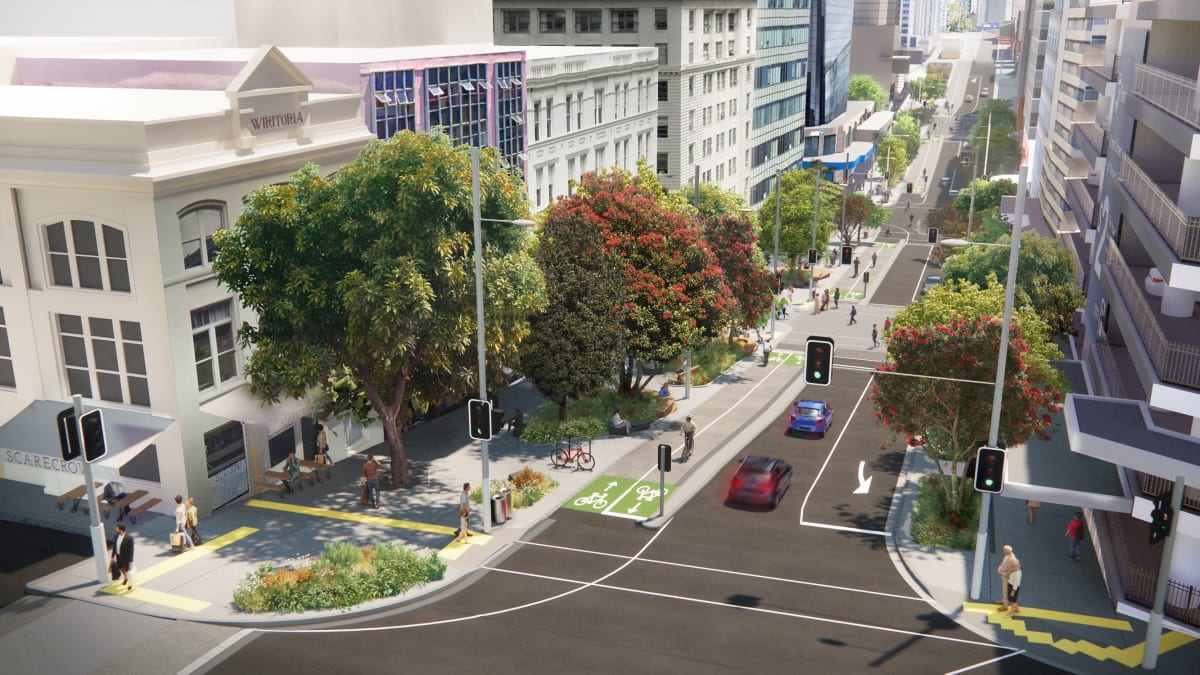
Larking sees part of that as public space standing in for the backyard.
“Apartment living means they don't have access to the typical backyard so we need to take into consideration some of the socialisation and leisure and get-together will take place in the public space outside buildings,” she said. “We need to think about how we use our streets.”
Scarce land in the central city means the sidewalks and public areas have to work especially hard, serving not just as the pedestrian transport network but also as the great outdoors for urban denizens.
“The streets are the public space in the CBD, so as we think about what the future needs and what the residents need, the reallocation of that space to entertainment and rest and recreation poses more of a need.”
When the dust from construction settles, Victoria Street will have one lane of traffic flowing in each direction, running right by the most-used entrance to the CRL station.
Investing in midtown

It’s the CRL itself that got all of the other plans into gear, with Auckland Council framing it as a “catalyst for change”.
Among those changes are a 21-storey mixed-use building called the Symphony Centre on top of the station, on the corner of Wellesley Street and Mayoral Drive.
This building will include nine levels of offices and 80 apartments.
Other expected developments include apartments beside the St James Theatre and 200 apartments in a 55-storey tower at the site of the old multi-storey carpark at 65 Federal Street.
Down on Queen Street, the largely disused SkyWorld building will be refurbished into the OnQ Entertainment Centre, with the interior layout being reworked.
Private developments are planned in concert with a raft of council-spearheaded projects, such as upgrades to the underpass entryway to the lower end of Myers Park and a refurbishment of Aotea Centre.
Auckland Council infrastructure and environmental services director Barry Potter said the council’s focus in recent years had been on downtown and Karangahape Road, but now its gaze was shifting to the space in between.
It’s an area that’s been lost in the shuffle at times as new retail and hospitality businesses pop up at the Viaduct, Britomart area or up on Karangahape Road, leaving the dead centre of town something of a no man’s land when it comes to nightlife.
“Midtown is the gateway to two of our universities and to our arts and entertainment quarters. It’s also a vibrant commercial and civic precinct,” Potter said. “With the Aotea Station set to bring significantly greater numbers, travel to the area will be frequent, safe and convenient. We’re making sure midtown will be ready.”







